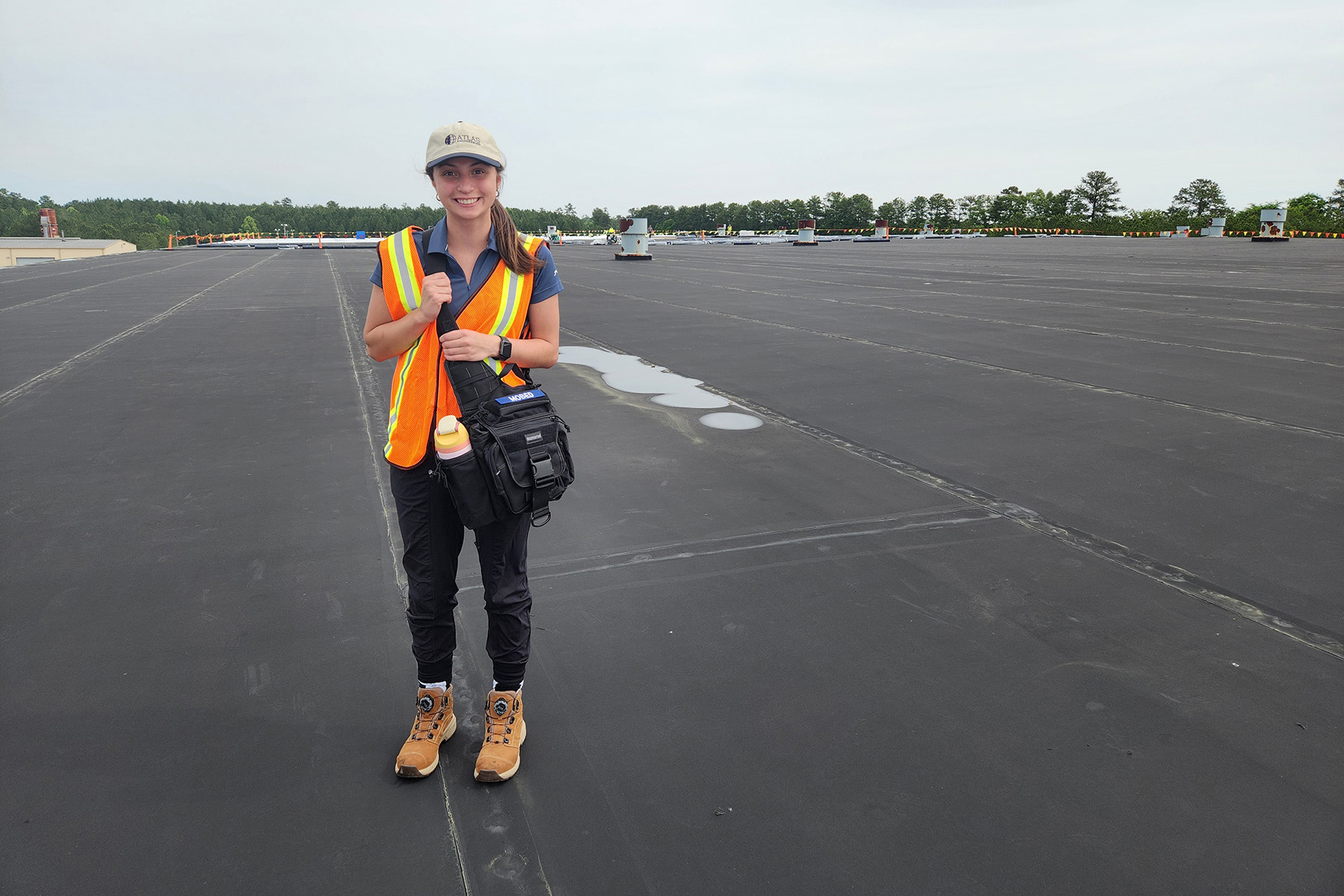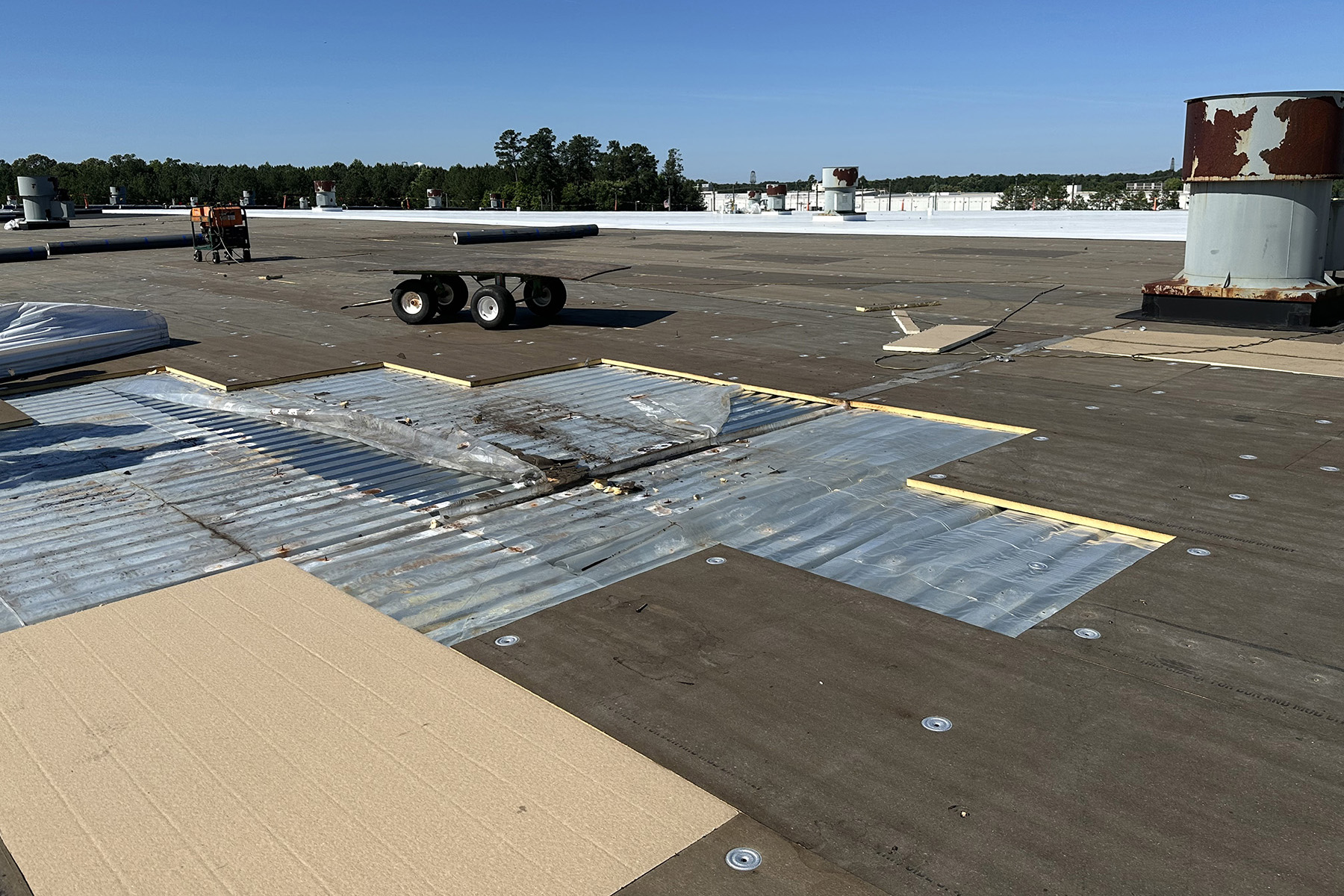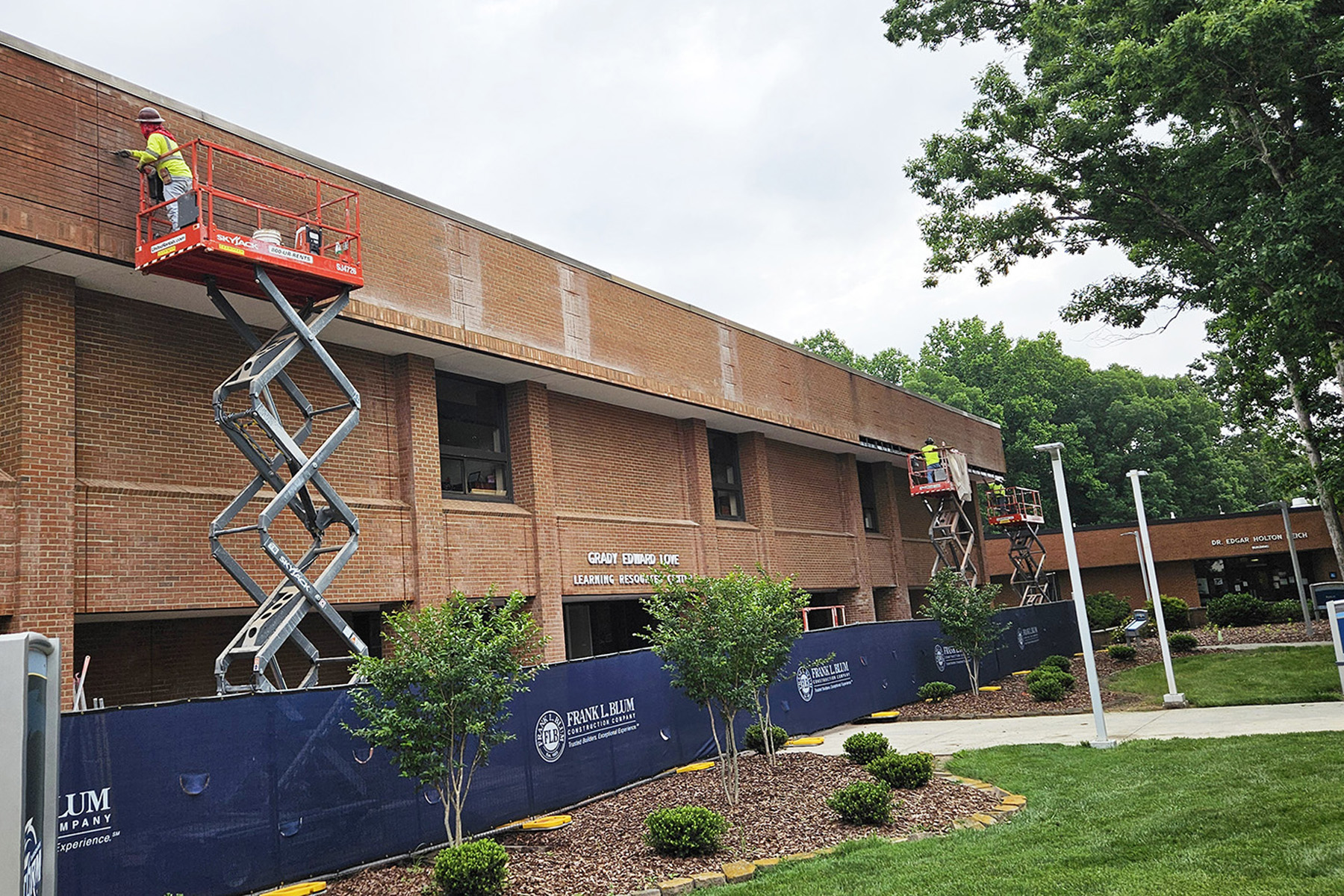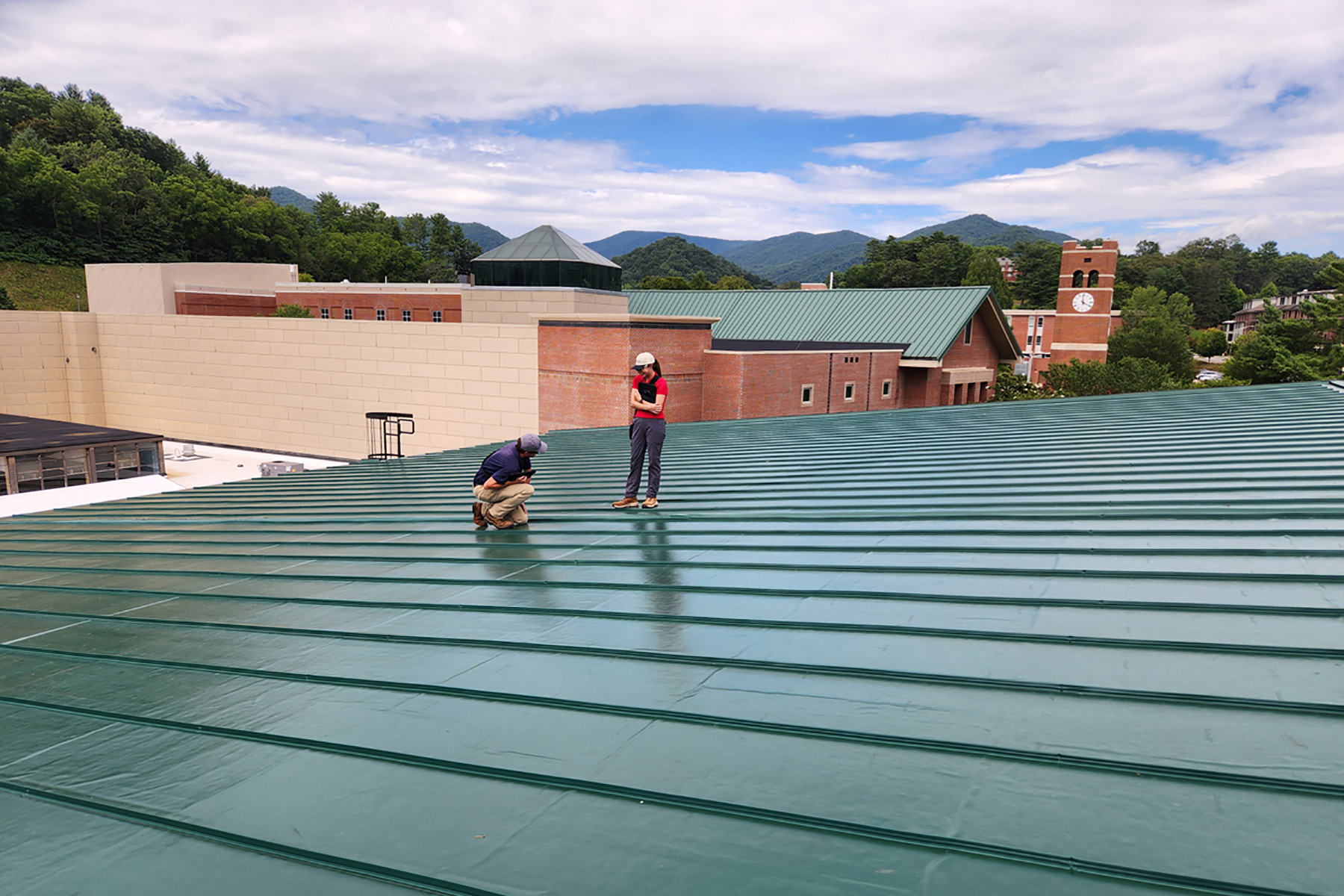
By Audrey Mobed
Internships offer invaluable experiences for civil engineering students and for the firms where they intern.
The decision to hire an intern can be challenging, especially for smaller civil engineering firms, because of uncertainties about the intern’s responsibilities, how to make the best use of the intern’s time, and how to ensure a mutually beneficial experience for the intern and the firm.
At my school, North Carolina State University, internships are not required, but most civil engineering students pursue one at some point during their education. For me, that experience came last summer, between my sophomore and junior years, when I spent nine weeks working as a paid intern at Atlas Engineering, a 12-person structural and building envelope firm in Raleigh, North Carolina. It was a terrific opportunity to gain hands-on experience in civil engineering and to explore potential career paths within the field.

Although I considered other firms, I was drawn to Atlas when my statics professor showed me a job flyer for a staff engineer position there. After gaining some insight about the company and becoming excited about the work it does, I contacted the company’s president, Mike Riccitiello, P.E., PMP. After an interview with Mike and a visit to Atlas’s office, I decided it was the right fit for me.
On my first day, my supervisor told me to be a sponge, to soak up information in every situation. And while that might seem like simple advice, it made a tremendous impact on me over that summer — one that I will carry with me throughout the rest of college, future opportunities, and my career.
My experiences were also memorable. On just my second day, I found myself standing at the base of a towering 40 ft extension ladder, about to help inspect the roof of a 400,000 sq ft distribution center. As I craned my neck, my heart raced. I’d never climbed an extension ladder before, much less used one to access a building’s roof, so I couldn’t help but feel intimidated by the sheer height and unfamiliarity of the situation.
In fact, as a civil engineering student with no field experience, I found the start of the internship daunting. But I knew this opportunity was my best chance to figure out what a career in engineering might be like.
There was no turning back.
Diverse opportunities
Atlas specializes in evaluating existing structures and designing repairs, and it was this dedication to repairing and restoring infrastructure that drew me to the company. I was also excited by the diverse range of projects that it handles, including construction administration and inspection as well as disaster response and emergency engineering support. This variety of opportunities promised a dynamic and rewarding experience.
The plan from the start was for most of my training to take place in the field. But before I could learn the engineering concepts, I had to know how to be safe on-site! My first lessons consisted of extension ladder safety, roof safety, fall protection, and the necessity of a hard hat — exactly what I needed to prepare for that climb onto that first roof.

One of several mentors I worked with during the internship acknowledged the unfamiliarity of this situation for me and took extra time to brief me before we began our visit. She not only walked me through what a TPO roofing system consists of, but also how to navigate it safely. At the time, I’d never heard the term TPO, which refers to thermoplastic polyolefin. In fact, we did not cover TPO in college until my materials class, which I took during the semester right after the internship.
I also didn’t know it at the time, but being trained on-site accelerated my understanding because I could see the material assembly and construction process firsthand. Different parts of the roof were in different phases of construction. Some areas showed the original membrane, some had metal decking or insulation exposed, while still other parts were complete. It was an incredibly eye-opening experience that allowed me to learn more thoroughly about each phase.
Complementing classwork
After that educational second day, I had the opportunity to go on site visits with every engineer before the summer was out. Just like that first one, the in-person site visits proved pivotal in my growth. I observed waterproofing work, roof replacements, new K-12 school construction, and residential damage projects.
However, much of my internship involved working at the Love Building at nearby Davidson-Davie Community College in Thomasville. This building houses multiple campus services, including the Learning Commons, health services, and a library, but it had experienced severe brick veneer cracking from thermal exposure.
Returning to the site every week, I learned about building control joints, shelf angles, and through-wall flashing — concepts previously unknown to me. But soon I was able to relate what I saw on-site to things I’d been taught in the classroom. In that and other ways, the internship complemented my education.
As I continued to work at the Love Building, my responsibilities increased. For example, I began to perform such field tasks as photo documentation of construction progress and measuring unit quantities. This gave me the confidence to compile site visit reports. By collaborating with my coworkers on these reports, I learned the importance of effective written communication in engineering, a concept often overlooked in school.
At the start of summer, the work Atlas performed on the Love Building had been completely foreign to me. But by the end, I’d gained a greater understanding of the materials used, construction processes, and the role of the designer on such projects — ideas that are hard to teach in just a classroom setting.
Confronting challenges
As with any new endeavor, there were certain challenges to overcome. For one thing, my primary contribution to the work often involved asking questions, which felt uncomfortable at first. But eventually I realized that, as a college sophomore, I was not expected to know even as much as a recent graduate or a newly hired employee. Therefore, asking questions and soaking up as much information as I could was actually the best use of my time.
In one instance, I asked a coworker something about a leak project. This quickly led to several members of the team coming by my desk to help answer the question, work things out on the nearby whiteboard, or just listen in. It was an invaluable lesson for me — about not only a particular project but also the work environment, which invited the sort of collaboration and mentorship that enhanced my experiences.
Another challenge I faced involved determining how best to fill my day when I wasn’t out in the field. I’d had only limited experience with design tools such as AutoCAD. This meant there was little I could do to contribute at my desk. But I wanted to keep learning without becoming a distraction to others in the office, who had their own work to do.
Because I had access to the company’s project archives, I began using any free time at the office to read through old documents, such as project manuals and design drawings. I even used travel time to its best advantage, asking coworkers as we drove to a worksite if they could tell me more about some of the projects I had found in the archives. These efforts helped fill in my time in a more productive way.
The close-knit community at a small firm like Atlas can be a great asset for navigating the partnership between intern and firm and for planning the intern’s time. During office-wide staff meetings, employees would share their plans for the week and prepare for site visits. This open communication and free exchange of schedules enabled me to observe activities from project to project across a large geographical area. For example, I might be at a project site in Lexington, North Carolina, one day and the next day be at a site across the state in Greenville. One day might be spent spray-testing a community center while the next day found me observing wall cavity construction and through-wall flashing.
More prepared
Once the internship ended, I transitioned back to school with vastly more knowledge about building envelopes and the engineering/construction industry as a whole. At the same time, I’d made new friendships with professionals I can contact for advice. The time I spent in the car with them on our way to site visits or at lunch was priceless. It allowed me to learn from people with unique experiences who are on similar career paths to my own. Because of their advice and feedback, I feel exponentially more prepared to enter the workforce after graduation.
I am also planning to participate in another internship this summer with the Raleigh office of Dewberry.
Working at an engineering firm during school provides a deeper understanding of the curriculum’s content. After taking statics and solid mechanics, I understood how loads worked, but it wasn’t until I was on a lift against the side of a building that the diagrams I had seen in class really came to life. Prioritizing learning during my time at Atlas enabled me to absorb in one summer more than I thought possible, and it allowed me to be a more helpful employee.

For example, while working at the Love Building, I listened closely to the staff engineers as they discussed the progress of the project. This allowed me to contribute to certain aspects of the site reports. On residential insurance projects, I took detailed notes and photographs of what the engineers were inspecting and the observations they made. This enabled me to be more effective when assisting with damage reports for the insurance company.
Even though asking questions can seem intimidating at first, it also expedites growth. So, to other civil engineering students considering an internship, I recommend that you take the time to get to know your coworkers as individuals, to understand what drives them. The relationships built during an internship are as valuable as the knowledge gained from it.
Audrey Mobed is a civil engineering student at the North Carolina State University.
SIDEBAR
A firm POV
By Mike Riccitiello, P.E., PMP
Atlas Engineering had worked with summer interns before, but they had been college students who simply wanted a part-time job. Audrey Mobed was the first intern who was studying structural engineering — and thus, someone we could help on her way to becoming an engineer upon graduation.
Although we do outreach efforts with North Carolina State University’s College of Engineering, it was Audrey who reached out to us about the internship. So we brought her in for a meeting and short interview — mostly to explain the responsibilities of an intern and what the summer was likely to be like — before hiring her.
From our perspective, the internship program serves two key goals. First, one of our core values is service, so we see our internship program as providing a service back to the community by growing and inspiring the next generation of engineers. Second, the program represents a potential pathway toward future employment at Atlas, which is definitely beneficial to us. In fact, we see the internship as almost an extended job interview: We get to see exactly how the students conduct themselves and interact with our team, which is a much better indicator for a possible fit as a future hire.
The experience has been good enough for us that we already have another structural engineering intern, this time from the University of North Carolina at Charlotte, lined up for this summer.
Mike Riccitiello, P.E., PMP, is the president of Atlas Engineering.
This article first appeared in the May/June 2025 issue of Civil Engineering as “An Engineering Intern’s Summer.”



